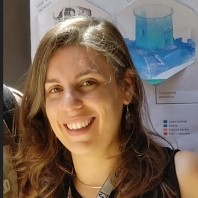Advancement of Remote Sensing and GIS in Risk Protection for Cultural Heritage
A special issue of Remote Sensing (ISSN 2072-4292). This special issue belongs to the section "Earth Observation for Emergency Management".
Deadline for manuscript submissions: 30 September 2024 | Viewed by 206
Special Issue Editors
Interests: GIS; webGIS; spatial database; BIM/HBIM; geographical standards; architectural and built heritage standards; artificial intelligence; explainability
Special Issues, Collections and Topics in MDPI journals
Interests: GIS; webGIS; spatial ontologies; spatial database; BIM/HBIM; geographical standards; architectural and built heritage standards; risk mapping; remote sensing
Special Issues, Collections and Topics in MDPI journals
Interests: GIS; webGIS; remote sensing; multi-source data analysis; geographical standards; architectural and built heritage standards
Special Issues, Collections and Topics in MDPI journals
Special Issue Information
Dear Colleagues,
The advancement of remote sensing and Geographic Information Systems (GISs) has significantly enhanced the protection of cultural heritage by providing sophisticated and cutting-edge tools for risk assessment, monitoring, and mitigation. Remote sensing technologies, including satellite imagery, LiDAR (Light Detection and Ranging), and aerial and drone surveys, play a crucial role in capturing high-resolution data for cultural sites. These data aid in identifying potential risks, such as natural disasters, climate change impacts, and human activities.
GISs complement remote sensing by integrating spatial data, enabling the creation of comprehensive risk maps and vulnerability assessments. They facilitate a holistic understanding of the cultural landscape, helping experts prioritise and address potential threats as well as studying future trends.
Furthermore, the integration of 3D models, such as BIMs (Building Information Models), IoT data, and AI techniques, offers a dynamic and multiscale representation of cultural sites. These elements not only aid in documentation but also assist in simulating different future scenarios. In the event of a disaster or with ongoing climatic changes, this technology proves invaluable for emergency response and recovery efforts, guiding conservationists and authorities in making informed decisions to minimise damage and loss.
The collaborative nature of remote sensing and GISs fosters interdisciplinary approaches involving archaeologists, geographers, conservationists, and disaster management experts. This synergy enables the development of proactive strategies for cultural heritage preservation, fostering a more resilient approach to safeguarding our global heritage in the face of evolving risks and challenges. Overall, the continual advancement of this domain serves as a powerful ally in the protection and conservation of cultural heritage, ensuring its longevity for future generations.
The aim of this Special Issue is to collect and investigate the most recent research, trends, and practical applications in the field of remote sensing and GISs applied to cultural heritage.
In particular, the Special Issue focuses on the description of scenario-based risks and hazards to study, analyse, document, enhance, and preserve archaeological, architectural, and environmental heritage.
The data used for these studies, which are possibly open access, can be made available and usable to the scientific community through publication in this Special Issue. Furthermore, contributions with methodologies and new practices for the management and monitoring of assets at risk will also be of interest. These tasks could be performed through consolidated or innovative approaches such as integrated 3D metric survey techniques, analyses of multi-hyper spectral data, the use of spatial databases, publication on user-friendly web platforms, the proposal or adoption of geospatial standards, image or point cloud classification, or semantic segmentation.
Article types: reviews and state of the art, theoretical research, and practical applications.
Suggested themes:
- Precision in Risk and Hazard Mapping Using Remote Sensing Data.
- Identification of Climate Change Trends for CH Sites.
- Scenario-Based Risks from Climate-Induced Threats.
- Advanced Change Detection Techniques for Heritage Sites.
- Comprehensive Monitoring Strategies for Cultural Heritage Preservation.
- Integration of Cutting-Edge Imaging Technologies.
- Utilising 3D Mapping and Modelling for Cultural Heritage Preservation.
- Assessing Impact: Vegetation, Urbanisation, and Infrastructure Development.
- Effective Strategies for Heritage Site Management and Conservation.
- CH Tourism Management and Preservation.
- Digital Preservation and Archiving of CH Data.
- Community Engagement in CH Protection.
You may choose our Joint Special Issue in Heritage.
Dr. Francesca Matrone
Dr. Elisabetta Colucci
Dr. Susana Del Pozo
Guest Editors
Manuscript Submission Information
Manuscripts should be submitted online at www.mdpi.com by registering and logging in to this website. Once you are registered, click here to go to the submission form. Manuscripts can be submitted until the deadline. All submissions that pass pre-check are peer-reviewed. Accepted papers will be published continuously in the journal (as soon as accepted) and will be listed together on the special issue website. Research articles, review articles as well as short communications are invited. For planned papers, a title and short abstract (about 100 words) can be sent to the Editorial Office for announcement on this website.
Submitted manuscripts should not have been published previously, nor be under consideration for publication elsewhere (except conference proceedings papers). All manuscripts are thoroughly refereed through a single-blind peer-review process. A guide for authors and other relevant information for submission of manuscripts is available on the Instructions for Authors page. Remote Sensing is an international peer-reviewed open access semimonthly journal published by MDPI.
Please visit the Instructions for Authors page before submitting a manuscript. The Article Processing Charge (APC) for publication in this open access journal is 2700 CHF (Swiss Francs). Submitted papers should be well formatted and use good English. Authors may use MDPI's English editing service prior to publication or during author revisions.
Keywords
- mapping hazards
- risk mapping
- geospatial standards
- GIS-BIM integration
- AI techniques (machine and deep learning)
- climate change trend identification
- monitoring of cultural heritage sites
- change detection
- open datasets







